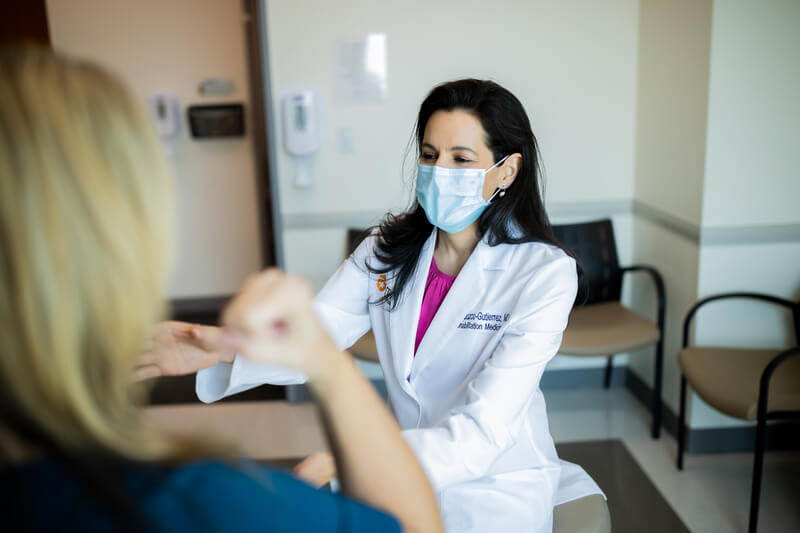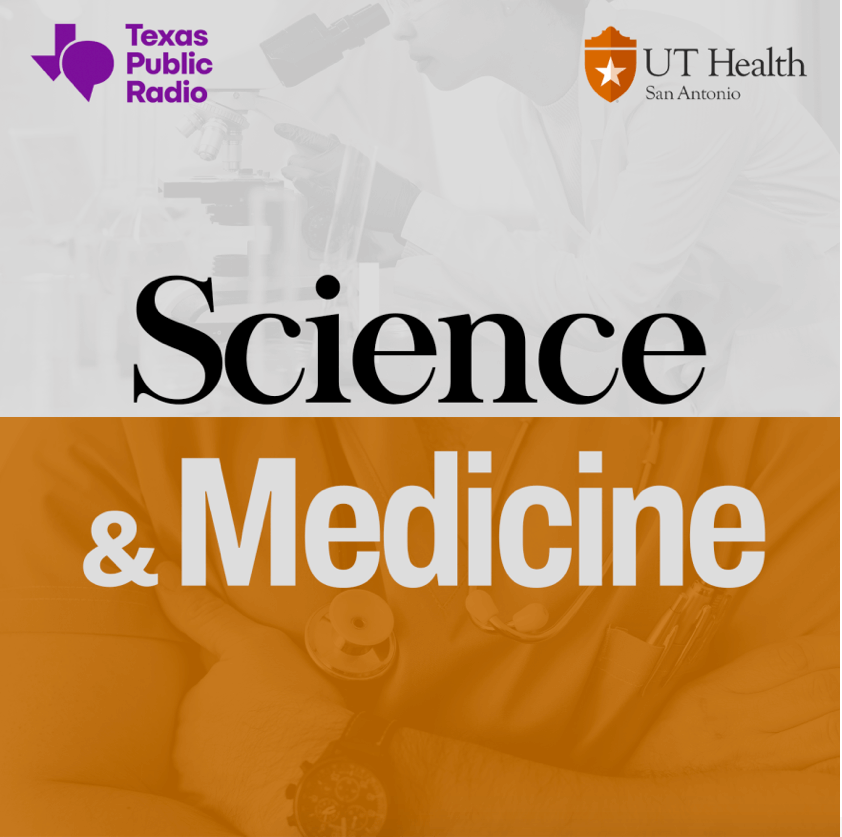Listen to the first episode of Texas Public Radio’s, Science & Medicine, a podcast that explains how scientific discovery at the UT Health Science Center San Antonio advances the way medicine is practiced around the world. When Congress wanted to hear from one of the nation’s leading experts on long COVID, it looked to San Antonio. Monica Verduzco-Gutierrez, MD, professor and chair of rehabilitation medicine at UT Health San Antonio, has been running two long COVID clinics since early in the pandemic — and she says every case is different.
For many, the days of the COVID-19 pandemic have all but faded into memory. But for those suffering from long COVID, the devasting effects of the disease are still top of mind. According to the Centers for Disease Control and Prevention, one out of 13 Americans has long COVID, making it one of the most common diseases in the U.S.

Monica Verduzco-Gutierrez, MD, professor and chair of the Department of Rehabilitation Medicine at The University of Texas Health Science Center at San Antonio, operates the university’s long COVID clinic. After treating countless long COVID patients, as well as experiencing the illness herself, Verduzco-Gutierrez is an expert in the debilitating impact of this puzzling disease.
“No two patients are alike, and the symptoms vary widely and occur in many different ways,” Verduzco-Gutierrez said. “Some patients will get completely better, but then develop new or recurring symptoms. It can be unpredictable, and that’s the nature of long COVID.”
Also known as post-acute sequelae of SARS-CoV-2 infection, or post-acute COVID-19 syndrome, long COVID symptoms range from deep fatigue to loss of taste or smell, constant shortness of breath, heart palpitations and digestive problems. This array of indications affects young and old alike — regardless of fitness levels and general health — and leaves patients with an exhausting post-viral infection “hangover” that lasts well after the acute viral infection is gone.
The complexities presented by long COVID make uncovering its causes particularly challenging, which makes the need for research urgent.
To help meet this need, the National Institutes of Health launched a nationwide initiative, called Researching COVID to Enhance Recovery (RECOVER), to understand the long-term health effects of COVID-19. UT Health Science Center San Antonio, in collaboration with clinical partner University Health, is one of 17 national adult RECOVER cohort sites and the only site in Texas. With participants in both San Antonio and Laredo, the RECOVER initiative is poised to make key discoveries that answer critical questions about the mechanism behind long COVID.
In addition, the U.S. Department of Health and Human Services, through the Agency for Healthcare Research and Quality, awarded a five-year, $5 million grant to UT Health Science Center San Antonio to expand access to care for individuals with long COVID.

“This is such an amazing opportunity to expand what we already do regarding high quality of care for people who have long COVID and integrate more multidisciplinary work with our experts at UT Health San Antonio,” said Verduzco-Gutierrez, who serves as the principal investigator for the grant.
The grant is one of nine totaling $45 million to support existing multidisciplinary long COVID clinics across the country in expanding access to comprehensive, coordinated and person-centered care for people with long COVID, particularly underserved, rural, vulnerable and minority populations that are disproportionately impacted.
UT Health Science Center San Antonio and Laredo clinical RECOVER data is critically important in making sure minority populations are adequately represented in research, said Verduzco-Gutierrez.
“We are in San Antonio with one of the largest minority populations in the United States,” she said. “The Hispanic population can be underserved when it comes to rehabilitation services. I wanted to make sure that this population had access to care.”


